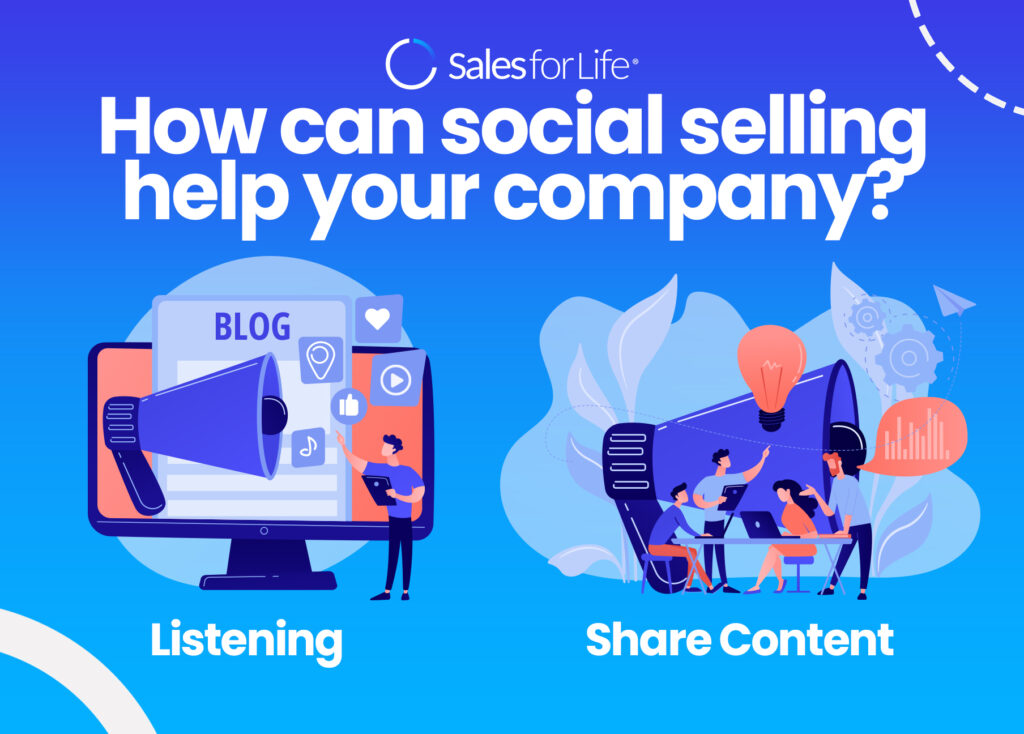Social selling is more valuable than ever before, with over half of the world’s population using social media. Sales leaders who like to stay ahead of trends rather than pursuing them should start integrating the process in their businesses.
For companies, social selling is leveraging social media to create leads and fuel your sales funnel.
This does not imply copying and pasting cold templates into LinkedIn and sending them to your connections. This is similar to spammy selling, where your odds of closing are nil.
It varies from standard sales strategies in that it places less emphasis on a quick response. Individual sales reps, on the other hand, focus on the “long game” and cultivating relationships over time.
To increase “organic” sales, sellers use social media to develop long-term connections, communicate authority and trustworthiness, and surface on decision-makers’ radars.
Data reveals that those that stay in the game for the long haul get rewarded. Top-performing sales agents, for example, consider social networking sites “extremely vital” to their performance, closing transactions 51% faster than their counterparts. Leaders in social selling also generate 45% more possibilities.
What does this look like in a business setting? Some companies have reduced their average selling process time by 20 days and increased the percentage of leads converting to prospects by 25% after implementing social selling tactics with LinkedIn’s Sales Navigator.
Social selling also makes it simpler for sales professionals to receive referrals from their LinkedIn networks, which is important because referrals account for 65 percent of new business for most businesses.

In the digital age, social selling is a must.
The development of digital technology has skewed the scales in favor of purchasers in business transactions. They’ve regained control of goods sources. Social selling is a prospecting method that returns power to the seller while maintaining a personal touch. Thanks to an active and non-intrusive presence, the seller has been able to return to the beginning of the purchasing cycle.
Social selling, like telephone or email marketing, is not a closing tactic. It’s the blend of the points of contact that allows you to reach out to new prospects in the places where they’re most comfortable. Social selling is a logical progression of sales professionals’ prospecting strategies.
Even if the two techniques are complementary, social media marketing must be separated from social selling:
- The goal of social media marketing is to cultivate and maintain a relationship between a business and its audience through content to raise brand recognition.
- To boost quality leads, social selling enables sellers to engage with their prospects and be acknowledged as experts in their professions.
Because there are fewer “personal” networks on Twitter and Linkedin, this strategy is easier to implement, and consumers are more comfortable and receptive to the concept of engaging in a dialogue with a vendor.

How can social selling help your company?
You already know how to perform social selling if you’ve spent time on social media conversing with friends, sharing images, publishing status updates, and so on. You may be already aware of it.
So here are a few pointers to help you improve your social selling skills and start connecting with prospects:
Make a listening station.
You may “listen” for hashtags because individuals love to use them in their social media posts. Create a column in Twitter’s Tweetdeck program, for example. Create columns for phrases pertinent to your industry. Help out whenever someone shares anything you can help with, whether it’s a query or an article they created. Respond to their queries and promote their articles with your social media accounts. This establishes a rapport with that individual, and you become a valuable resource.
You may also look for hashtags on LinkedIn and follow them on Instagram. Pay attention to them as well, and engage in similar dialogues with others.
Make your material.
You already have industry knowledge and skills, so share it! Don’t merely wait for opportunities to sell. Write blog posts that assist individuals in resolving a specific issue. Take pictures of your solution in action and share them with us. Hold webinars to educate people about a specific topic. Bring potential clients on as guests to your podcast and invite them to share their knowledge.
If you provide enough material, you’ll ultimately get the credibility and a reputation, which will aid you in your sales calls.
Social selling allows you to develop your knowledge so that you don’t have to prove it every time you meet with a new prospect. The evidence element of the sales process is complete if they contacted you because of your social media post. They are aware of your abilities and have self-qualified to join your sales funnel.
Conclusion
Because it is based on true sales concepts such as creating connections and trust, social selling works in sales. However, it’s a time-consuming and intricate procedure. Rather than a race to the finish line, social selling is a relationship-driven marathon.
You may open the floodgates to bigger transactions, quicker sales cycles, and recurring referrals and sales once you’ve created crucial contacts and earned confidence.


